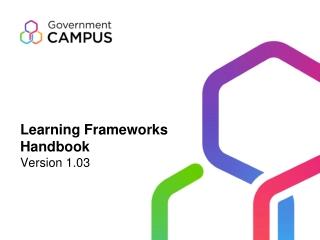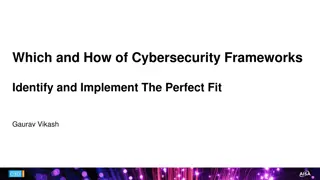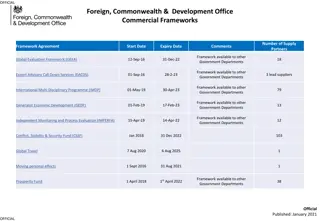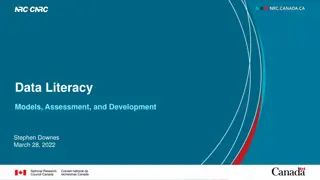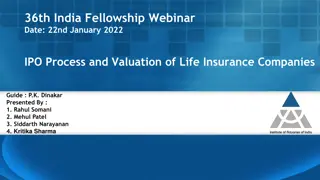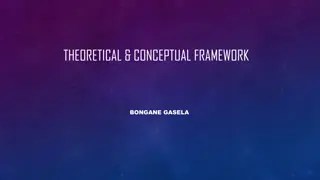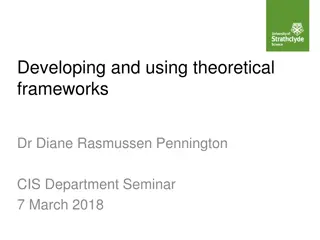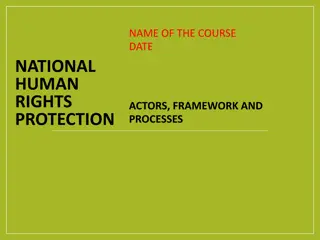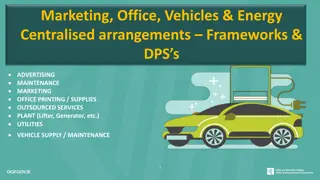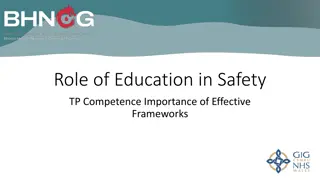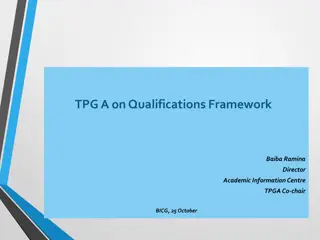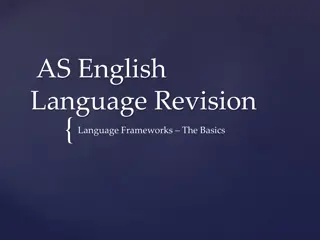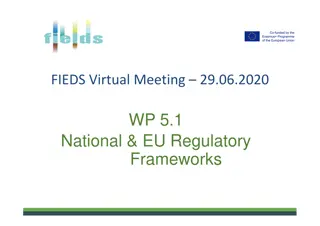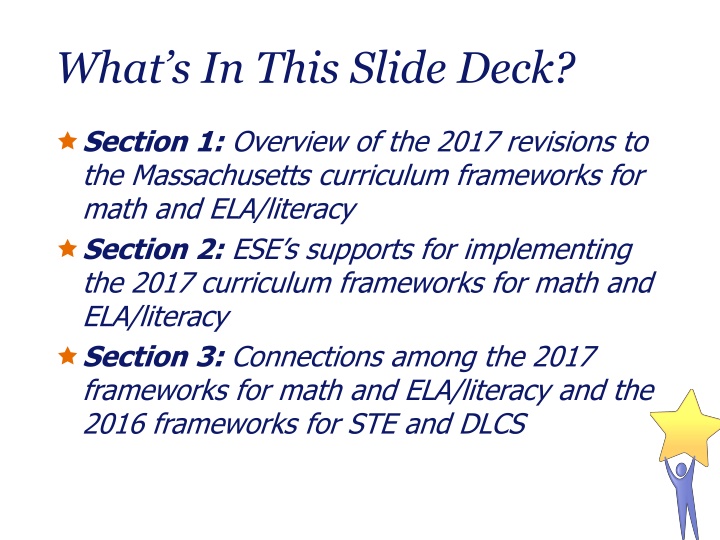
2017 Revisions to Massachusetts Curriculum Frameworks for Math and ELA/Literacy
Explore the 2017 revisions to the Massachusetts curriculum frameworks for Math and ELA/Literacy, including the goals of the review process, supports for implementation, and connections among different frameworks. Discover changes in clarity, coherence, and rigor in Math standards along with enhancements in ELA/Literacy instruction scenarios. Stay updated on educational developments for improved curriculum, instruction, and assessment.
Download Presentation

Please find below an Image/Link to download the presentation.
The content on the website is provided AS IS for your information and personal use only. It may not be sold, licensed, or shared on other websites without obtaining consent from the author. If you encounter any issues during the download, it is possible that the publisher has removed the file from their server.
You are allowed to download the files provided on this website for personal or commercial use, subject to the condition that they are used lawfully. All files are the property of their respective owners.
The content on the website is provided AS IS for your information and personal use only. It may not be sold, licensed, or shared on other websites without obtaining consent from the author.
E N D
Presentation Transcript
Whats In This Slide Deck? Section 1: Overview of the 2017 revisions to the Massachusetts curriculum frameworks for math and ELA/literacy Section 2: ESE s supports for implementing the 2017 curriculum frameworks for math and ELA/literacy Section 3: Connections among the 2017 frameworks for math and ELA/literacy and the 2016 frameworks for STE and DLCS
Overview of the 2017 Revisions to the Massachusetts Curriculum Frameworks for Math and ELA/Literacy Goals and major outcomes of the framework review process
Goals of the Review Process Make use of lessons learned in six years of implementing the 2011 standards Increase clarity, coherence, and rigor where necessary Maintain clarity, coherence, and rigor where appropriate Avoid unnecessary disruption to curriculum, instruction, and assessment 3 Massachusetts Department of Elementary and Secondary Education
Math: Clarity Descriptions of Standards for Mathematical Practice revised to provide examples specific to each grade span: PK 5, 6 8, and 9 12. Key terms, such as fluency and know from memory, clarified. Model course standards edited to clarify content expectations and boundaries. Standard codes revised to include letter denoting cluster level; standards previously coded MA fully integrated. 4 Massachusetts Department of Elementary and Secondary Education
Math: Coherence Solidified learning progression related to recognizing patterns in numbers and ratio/proportions/rates in order to lay a foundation for algebraic thinking. For example: Added language to recognize and/or identify patterns in grades K 2. Added rate to grade 6 cluster heading in Ratio and Proportional Relationships domain. Made edits to ensure consistent development of content PK 12. 5 Massachusetts Department of Elementary and Secondary Education
Math: Rigor Definition of mathematical rigor as balanced approach. Course-taking pathway compressing grades 6 8 standards to allow completion of Model Algebra I course in grade 8. Decision-making guidance for completing 4 years of high school mathematics culminating in an advanced math class in grade 12. Retention of the high school (+) plus standards in the model high school courses. 6 Massachusetts Department of Elementary and Secondary Education
ELA/Literacy: Clarity Sample instructional scenarios and student work provide illustrations of specific standards. Updated and expanded glossary entries define terms as they are used in the standards. Edits ensure consistent usage of terms: for example: text, audience, text features. New and updated guidance on text complexity helps educators choose high-quality texts. 7 Massachusetts Department of Elementary and Secondary Education
ELA/Literacy: Coherence Cross-references and parallel expectations reinforce connections across strands. Massachusetts-specific standards added in 2011 now integrated more fully. Some vertical progressions smoothed: for example, sentence production in grades 1 3. Language standards emphasize application in authentic oral and written communication. 8 Massachusetts Department of Elementary and Secondary Education
ELA/Literacy: Rigor Writing standards emphasize importance of flexibility and nuance in student writing. Academic and discipline-specific language mentioned more frequently and explicitly. More sustained research projects expected in middle grades as well as high school. High school standards align more tightly with postsecondary approaches to textual analysis. 9 Massachusetts Department of Elementary and Secondary Education
Supports for Implementing the 2017 Massachusetts Curriculum Frameworks for ELA/Literacy and Mathematics - New, updated, and forthcoming resources - Opportunities for direct engagement with ESE - Three core messages about the standards
Where to Find (Most) Resources http://www.doe.mass.edu/frameworks/ 11 Massachusetts Department of Elementary and Secondary Education
New:Highlights Documents 12 Highlights available at http://www.doe.mass.edu/frameworks/ Massachusetts Department of Elementary and Secondary Education
New: Quick Reference Guides 13 QRGs available at http://www.doe.mass.edu/frameworks/
Updated: What to Look For Guides 14 WTLFs available at http://www.doe.mass.edu/candi/observation/ Massachusetts Department of Elementary and Secondary Education
Updated: Writing Standards in Action 15 WSA materials available at http://www.doe.mass.edu/candi/wsa/ Massachusetts Department of Elementary and Secondary Education
Forthcoming: Other Resources Family-friendly, multilingual guides to the standards by grade, with prompts for conversations at home (with children) and at school (with teachers) Guidance on scaffolding the standards for students working below grade level More user-friendly way of navigating standards electronically 16 Massachusetts Department of Elementary and Secondary Education
Direct Engagement: Networks Regional and statewide networks in 2017 2018: Early numeracy (math, pre-K 3) Proportional reasoning (math, grades 4 7) Coursework pathways (math, grades 6 12) Integrating standards (part of Early Grades Literacy Grant) Integrating standards (literacy, grades 4 12) Flexibility in student writing (literacy, grades 9 12) Time on science (STE, pre-K 5) Standards-aligned assessments (STE, grades 5 8) Urban district leaders (math, literacy, STE; pre-K 12) English learner education leaders (pre-K 12) For more information, see: http://www.doe.mass.edu/candi/networks.pdf 17 Massachusetts Department of Elementary and Secondary Education
We Believe: Every student should engage with grade-appropriate text every day. with meaningful real-world problems every day. in scientific conversations using data every week. 18 Massachusetts Department of Elementary and Secondary Education
Connections Among the Massachusetts Curriculum Frameworks for ELA/Literacy, Mathematics, STE, and DLCS Parallels and cross-references designed to maximize coherence in expectations for both students and teachers
Mathematics - A Balanced Approach 20 Massachusetts Department of Elementary and Secondary Education
Mathematics - A Balanced Approach 2.OA.C.3 - Determine whether a group of objects (up to 20) has an odd or even number of members, e.g., by pairing objects or counting them by 2s; write an equation to express an even number as a sum of two equal addends. 21 Massachusetts Department of Elementary and Secondary Education
Mathematics - A Balanced Approach 6.NS.B.4 - Find the greatest common factor of two whole numbers less than or equal to 100 and the least common multiple of two whole numbers less than or equal to 12. Use the distributive property to express a sum of two whole numbers 1 100 with a common factor as a multiple of a sum of two whole numbers with no common factor. For example, express 36 + 8 as 4 (9 + 2). 22 Massachusetts Department of Elementary and Secondary Education
Standards for Mathematical Practice Standards, to be taught and assessed What successful math learners do to learn and solve problems Applicable across content areas Connected to growth mindset Apply to the spectrum of learners 23 Massachusetts Department of Elementary and Secondary Education
Standards for Mathematical Practice 24 Massachusetts Department of Elementary and Secondary Education
Standards for Mathematical Practice 3. Construct viable arguments and critique the reasoning of others. Mathematically proficient students understand and use stated assumptions, definitions, and previously established results in constructing arguments. They make conjectures and build a logical progression of statements to explore the truth of their conjectures. They are able to analyze situations by breaking them into cases, and can recognize and use counterexamples. They justify their conclusions, communicate them to others, and respond to the arguments of others. They reason inductively about data, making plausible arguments that take into account the context from which the data arose. Mathematically proficient students are also able to compare the effectiveness of two plausible arguments, distinguish correct logic or reasoning from that which is flawed, and if there is a flaw in an argument explain what it is. Elementary students can construct arguments using concrete referents such as objects, drawings, diagrams, and actions. Such arguments can make sense and be correct, even though they are not generalized or made formal until later grades. Later, students learn to determine domains to which an argument applies. Students at all grades can listen or read the arguments of others, decide whether they make sense, and ask useful questions to clarify or improve the arguments. and ask useful questions to clarify or improve the arguments. 3. Construct viable arguments and critique the reasoning of others. Mathematically proficient students understand and use stated assumptions, definitions, and previously established results in constructing arguments. They make conjectures and build a logical progression of statements to explore the truth of their conjectures. They are able to analyze situations by breaking them into cases, and can recognize and use counterexamples. They justify their conclusions, communicate them to others, and respond to the arguments of others. They reason inductively about data, making plausible arguments that take into account the context from which the data arose. Mathematically proficient students are also able to compare the effectiveness of two plausible arguments, distinguish correct logic or reasoning from that which is flawed, and if there is a flaw in an argument explain what it is. Elementary students can construct arguments using concrete referents such as objects, drawings, diagrams, and actions. Such arguments can make sense and be correct, even though they are not generalized or made formal until later grades. Later, students learn to determine domains to which an argument applies. Students at all grades can listen or read the arguments of others, decide whether they make sense, 25 Massachusetts Department of Elementary and Secondary Education
Standards for Mathematical Practice 6. Attend to precision. Mathematically proficient students try to communicate precisely to others. They try to use clear definitions in discussion with others and in communicating their own reasoning verbally and/or in writing. In problem solving they state the meaning of the symbols they choose, including using the equal sign consistently and appropriately. They are careful about specifying units of measure and labeling axes to clarify the correspondence with quantities in a problem. They calculate accurately and efficiently, expressing numerical answers with a degree of precision appropriate for the problem context. In the elementary grades, students give carefully formulated explanations to each other. By the time they reach high school, they have learned to examine claims and make explicit use of definitions. have learned to examine claims and make explicit use of definitions. 6. Attend to precision. Mathematically proficient students try to communicate precisely to others. They try to use clear definitions in discussion with others and in communicating their own reasoning verbally and/or in writing. In problem solving they state the meaning of the symbols they choose, including using the equal sign consistently and appropriately. They are careful about specifying units of measure and labeling axes to clarify the correspondence with quantities in a problem. They calculate accurately and efficiently, expressing numerical answers with a degree of precision appropriate for the problem context. In the elementary grades, students give carefully formulated explanations to each other. By the time they reach high school, they 26 Massachusetts Department of Elementary and Secondary Education
Science Technology/Engineering Rigor and Balance 27 Massachusetts Department of Elementary and Secondary Education
STE Scientific Inquiry 28 Massachusetts Department of Elementary and Secondary Education
STE Engineering Design 29 Massachusetts Department of Elementary and Secondary Education
Science and Engineering Practices - #7 Engaging in argument from evidence PK 2 Construct an argument with evidence for how plants and animals can change the environment; distinguish between opinions and evidence in one s own explanations; listen actively to others to indicate agreement or disagreement based on evidence. Construct an argument that animals and plants have internal and external structures that support their survival, growth, behavior, and reproduction; distinguish among facts, reasoned judgment based on data, and speculation in an argument. Construct an argument based on evidence for how environmental and genetic factors influence organism growth; respectfully provide and receive critiques about one s arguments, procedures, and models by citing relevant evidence with pertinent detail. Respectfully provide and/or receive critiques on scientific arguments by probing reasoning and evidence and challenging ideas and conclusions, and determining what additional information is required to solve contradictions. 3 5 6 8 30 HS Massachusetts Department of Elementary and Secondary Education
Digital Literacy and Computer Science 31 Massachusetts Department of Elementary and Secondary Education
DLCS - Guiding Principle 1: Learning Digital Literacy and Computer Science ideas should be explored in ways that stimulate curiosity, create enjoyment, and develop depth of understanding. Students should be actively engaged in designing, creating and inventing, discussing ideas, and applying their skills in interesting, thought-provoking situations. As students develop technology skills, it is important they apply these skills in their classroom, school, and life so that they will understand why these skills are important. For example, a student who needs to gather data in a science experiment and organize and manipulate the data in order to analyze the results will see a reason for learning about the features and function of a data collection tool and database. This is context-sensitive learning in which technology skills instruction is centered on the students needs. Student understanding is further developed through ongoing reflection about cognitively demanding and worthwhile tasks. reflection about cognitively demanding and worthwhile tasks. Digital Literacy and Computer Science ideas should be explored in ways that stimulate curiosity, create enjoyment, and develop depth of understanding. Students should be actively engaged in designing, creating and inventing, discussing ideas, and applying their skills in interesting, thought-provoking situations. As students develop technology skills, it is important they apply these skills in their classroom, school, and life so that they will understand why these skills are important. For example, a student who needs to gather data in a science experiment and organize and manipulate the data in order to analyze the results will see a reason for learning about the features and function of a data collection tool and database. This is context-sensitive learning in which technology skills instruction is centered on the students needs. Student understanding is further developed through ongoing Tasks should be designed to challenge students in multiple ways. Activities should build upon curiosity and prior knowledge and enable students to solve progressively deeper, broader, and more sophisticated problems. Digital literacy and computer science tasks reflecting sound and significant concepts should generate active classroom talk, promote the development of conjectures, and lead to an understanding of the necessity for digital literacy and computer science reasoning. understanding of the necessity for digital literacy and computer science reasoning. Tasks should be designed to challenge students in multiple ways. Activities should build upon curiosity and prior knowledge and enable students to solve progressively deeper, broader, and more sophisticated problems. Digital literacy and computer science tasks reflecting sound and significant concepts should generate active classroom talk, promote the development of conjectures, and lead to an 32 Massachusetts Department of Elementary and Secondary Education
DLCS Practice #5 Communicating Communication is the expression and exchange of information between two or more people. Communication includes written and oral mediums, as well as tangible representations supported by graphs, visualizations, demonstrations, stories, and analysis. Effective communication is accurate, clear, concise, persuasive, and responsible. Skills include: Evaluating various digital tools for best expression of a particular idea or set of information; Selecting and using digital media and tools to communicate effectively; Communicating to or with different audiences; Describing computation with accurate and precise language, notations, or visualizations where relevant; Summarizing the purpose of a proposed solution, model, prototype, or computational artifact; Justifying the design, appropriateness of choices, and selection of a solution; and Communicating responsibly, such as respecting intellectual property. Communicating responsibly, such as respecting intellectual property. Communication is the expression and exchange of information between two or more people. Communication includes written and oral mediums, as well as tangible representations supported by graphs, visualizations, demonstrations, stories, and analysis. Effective communication is accurate, clear, concise, persuasive, and responsible. Skills include: Evaluating various digital tools for best expression of a particular idea or set of information; Selecting and using digital media and tools to communicate effectively; Communicating to or with different audiences; Describing computation with accurate and precise language, notations, or visualizations where relevant; Summarizing the purpose of a proposed solution, model, prototype, or computational artifact; Justifying the design, appropriateness of choices, and selection of a solution; and 33 Massachusetts Department of Elementary and Secondary Education
ELA/Literacy Balance knowledge, understanding, application Explain and argue coherently and convincingly Analyze and evaluate claims and evidence Notice patterns and underlying structures Interpret qualitative and quantitative data Define questions and structure inquiry Communicate clearly and precisely Choose appropriate tools and strategies 34 Massachusetts Department of Elementary and Secondary Education
ELA/Literacy Specific standards link to relevant examples and standards from various content areas Resource sections discuss broader connections among content areas, citing guidance on literacy in other frameworks 35 Massachusetts Department of Elementary and Secondary Education
ELA/Literacy: PK5 Standards address literacy across the curriculum more explicitly 36 Massachusetts Department of Elementary and Secondary Education
ELA/Literacy: 612 Standards for Literacy in the Content Areas include Speaking and Listening strand Comprehension and Collaboration Prepare for and participate effectively in a range of conversations and collaborations Integrate and evaluate information presented in diverse media and formats Evaluate a speaker s point of view, reasoning, and use of evidence Presentation of Knowledge and Ideas Present information, findings, and supporting evidence Make strategic use of digital media and visual displays of data Adapt speech to a variety of contexts and communicative tasks 37 Massachusetts Department of Elementary and Secondary Education

